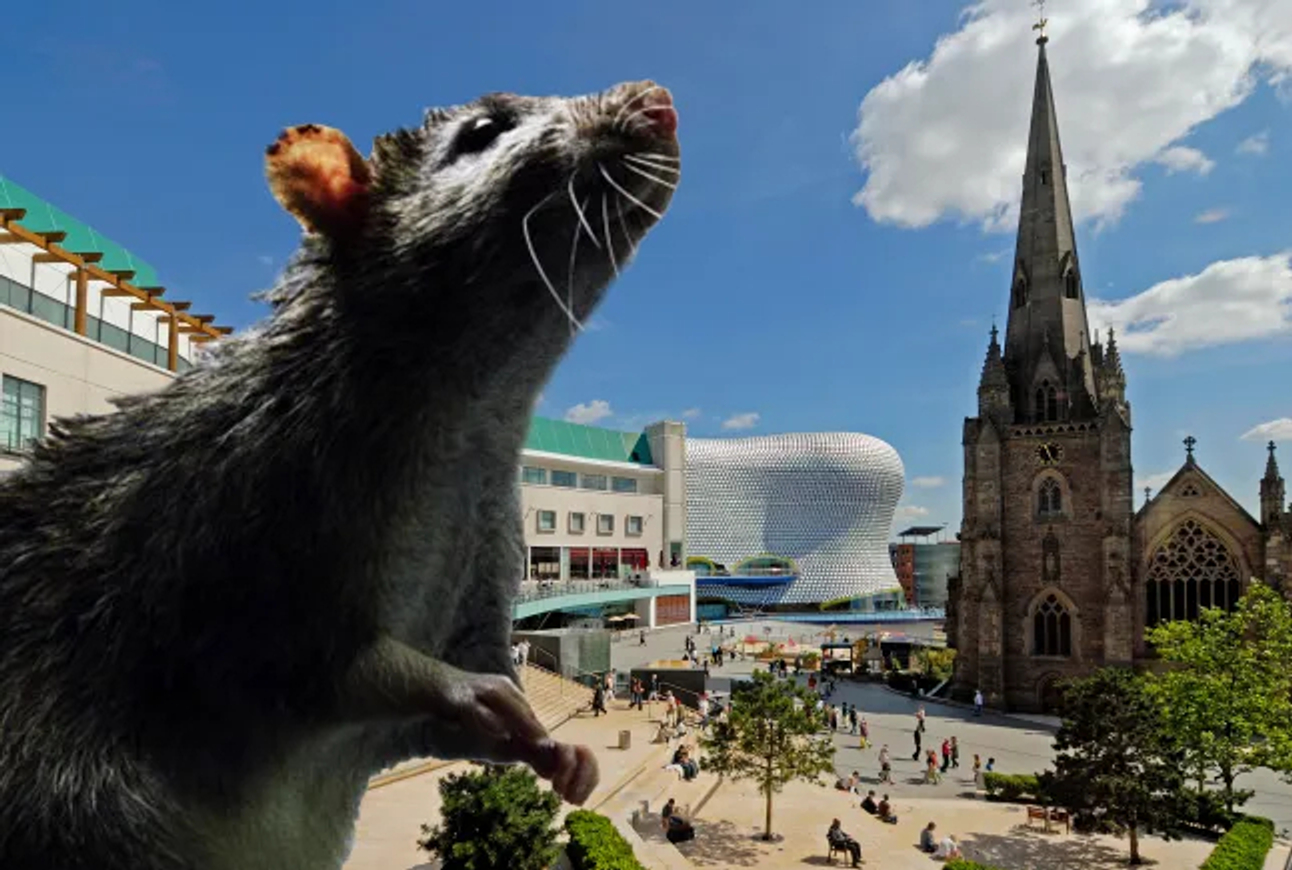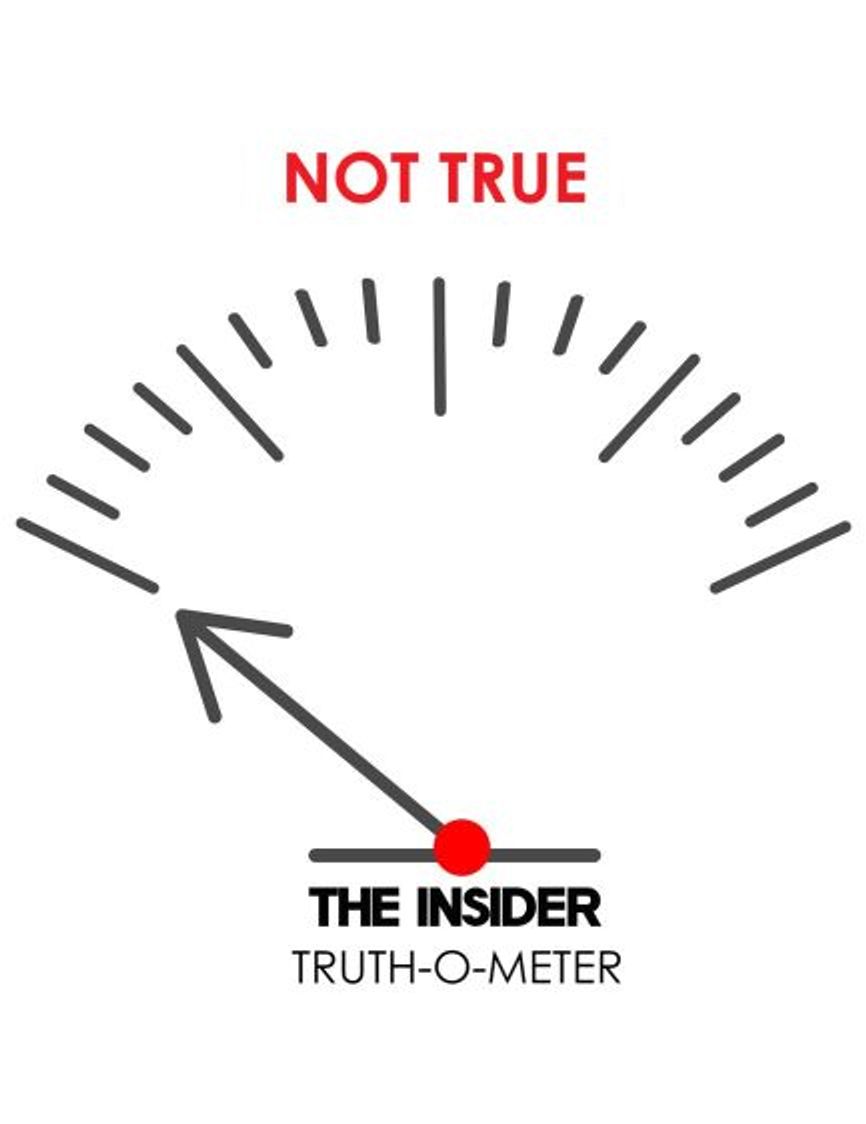

In a daytime news broadcast on April 4, Russia’s Perviy Kanal (Channel One) — the country’s leading state-run propaganda network — aired a segment titled “In Birmingham, Rats the Size of Cats Appear Due to Garbage Collectors' Strike.” A write-up of the segment posted on the channel’s website read:
“Rats the size of cats have appeared on the streets of the UK’s Birmingham, where the streets are drowning in 17 thousand tons of waste. The garbage collapse occurred due to the strike of utility workers.
It is reported that the local authorities wanted to lay off several crews due to a hole in the budget, after which the union announced a strike.”

Garbage collectors are indeed on strike in Birmingham — a city of over 1 million in England’s West Midlands — and the footage shown on Channel One of garbage bags piled in multiple layers on the sidewalks is authentic. However, the segment fails to live up to its headline: namely, it does not show any giant rats — and that’s no coincidence.
Rats comparable in size to a small cat do exist in the wild, such as the Bosavi woolly rat (Coryphomys buehleri), once believed to be extinct, and Hoffmann’s rat. These rare species can reach a total length of up to one meter (including the tail). However, they are not native to Europe. The species commonly found across Europe — the brown rat, also known as the Norway rat or Rattus norvegicus — typically grows to about 25 centimeters (close to 10 inches) in body length excluding the tail). In rare cases, individual rats may reach up to 40 centimeters (over 15.5 inches), though the tail remains shorter than the body.
Channel One clearly sourced the story about cat-sized rats from British tabloids. A March 13 article in the The Daily Mail, titled “Invasion of the 'squeaky blinders': Birmingham overrun with rats 'the size of CATS' feasting on food left in mounds of bin bags piled up because of bin strikes,” read:
“Giant rats gorging on the mountains of rubbish flowing through the streets are plaguing Birmingham as bin workers take to the picket lines.
Rodents said to be ‘the size of cats’ have been sighted by horrified residents scurrying around vast piles of garbage that have built up since the start of the year.
Almost 400 bin workers in the second city have been striking intermittently since January in an escalating row over the scrapping of some roles.
As they began an all-out strike on Tuesday morning, MailOnline visited to see how bad the rat problem was — and uncovered one more than a foot long. The huge rodent had been dead for a few days and was spotted lying near a discarded mop and bucket behind a row of shops in the Sparkbrook neighbourhood.
As we held up the rodent with a litter picker to measure it, a local walked past and said: ‘Trust me, that’s not a big one. We get them much bigger! Some are the size of the stray cats and we call them the Squeaky Blinders because they have Birmingham in their grip at the moment…’
[Editor’s note: “Squeaky Blinders” is a play on Peaky Blinders, the name of a famous British TV series about a Birmingham gang in the early 20th century]
‘There are so many now. Too many. But they’re attracted by all of the rubbish that has built up over the last few months. There’s food packaging and waste everywhere. It’s like a buffet for them. We don’t see many in the day but at night the streets are crawling with them.
[...] For rat-catcher William Timms, 47, [the] owner of WJ Pest Solutions in Birmingham, it is an increasingly common sight.
He told MailOnline rats in the city are getting bigger because they are feasting more on human food, which is high in protein, as uncollected bin bags remain on street corners.”
Clearly, these so-called “giant rats” appear to be little more than an urban legend. While gigantism in animals can occur when there is an abundant supply of food — an evolutionary process that typically favors herbivores, which can enhance their survivability by growing too large to be easily preyed upon — such changes require multiple generations. Rats have a lifespan of up to three years and begin reproducing at around six months. The garbage collectors’ strike in Birmingham has been ongoing for only three months — albeit with periodic interruptions.
Garbage collector strikes are not uncommon in major European cities. A particularly severe waste management crisis gripped Naples between 2007 and 2012. Similar disruptions have taken place in Edinburgh in 2022 and Marseille in 2024. Yet the emergence of giant rats has never been recorded in any of these cases — whether by zoologists on the ground, or by propagandists off in Moscow.